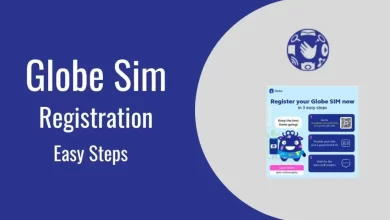Optimizing Patient Care: 7 Effective Communication Techniques in Nursing

Communication is the foundation of all good nursing practice as it helps in ensuring quality healthcare services. They make the patients to be understandable and respected, and this something that has a close relationship to patient satisfaction and the eventual result. Effective communication skills are relevant to every aspect of a nurse’s practice to ensure quality and empathetic care.
The seven best practices of communication in nursing that can be applied to improving the relationships between patients and caregivers include:
-
Embrace Therapeutic Communication
Therapeutic communication is a purposeful form of communication used by nurses to support patients’ emotional and psychological well-being. This technique involves active listening, empathy, and providing a safe space for patients to express their feelings and concerns. Incorporating nurse-therapeutic communication into daily practice can build trust and rapport, helping patients feel more comfortable and supported during their healthcare journey.
-
Practice Active Listening
It is para mutual that active listening is a crucial approach to communication in the nursing profession. It encompasses listening to the patient, comprehending the subject, and then, providing an appropriate response. To implement active listening, fix attention to the patient’s speaker, use head movements to confirm understanding, and refrain from speaking mid-sentence. Listening can include repeating what the patient has said by paraphrasing what they have said to demonstrate that you are interested and comprehend their fears and doubts.
-
Use Open-Ended Questions
Open-ended questions leave much room for the patient to explain the situation from as many angles as possible and in detail regarding their emotions and physical symptoms. While closed questions direct a more appropriate and precise answer, preferably in the form of yes or no, open questions compel individuals to expound more concerning the issue of focus. For instance, when facing one RAI question such as ‘Is the client experiencing any pain?’, the staff can ask ‘Can you tell me more about the type of pain you have?’ Such questioning facilitates obtaining more information that is needed to classify RAI and plan the client’s care.
-
Show Empathy and Compassion
Lack of compassion is viewed as a critical barrier to the delivery of proper nursing care through communication. Empathy requires acknowledging the patient’s feelings and their situation, while compassion entails expressing concern about the patient’s well-being or needing their assistance. Patients have various ways in which they receive healthcare and the smallest things such as holding their hand or saying a soothing word can go a long way. Thus, by possessing empathy and compassion, meaning recognizing and understanding the patient’s distress and attempting to reduce it, the nurses can contribute to making the atmosphere more conducive to the patient’s healing.
-
Maintain Professional Boundaries
Moreover, as much as developing the kind of relationship that would enable one to quickly access and share information with professionalism, it is important to avoid the impression of being too familiar with foreign clients. This means that the relationship between the nurse and the patient does not facilitate any personal interests between them but is purely professional concentrating on the well-being of the patient. They should ensure that they are friendly, but at the same time, they should not take long to talk to the patients or engage them in personal issues. This is especially true where there are clear boundaries that would ensure that the person or entity under consideration would not be compromised or driven by non-professional interests.
-
Use Clear and Simple Language
Many medical terms indeed come with high levels of complexity which many patients find rather entertaining to deal with. Performing this communication technique effectively also minimizes the chances of the patients misunderstanding their conditions, their treatment, and general care. While translating complex medical terms into easily understandable ones, divide each term and ensure the patient(s) have understood it by asking them their way of reproducing it. Therefore, distributing additional written content together with the oral presentation or providing visual support can complement the process as well.
-
Provide Positive Reinforcement
Rewarding is a practice of praising or supporting any efforts or changes that a patient embodies. This technique can greatly help patients and empower them to follow the recommended courses of treatment. Remarks such as ‘You are doing well’, or ‘I know how much you are trying to do for this’ can go a long way in encouraging the patient, and making them comply with their treatment.
Conclusion
Communication skills are an essential aspect of care delivery that the nurse should master and is an essential technique for improving their nursing care delivery. Therapeutic communication can be defined as a way of communication in which the nurse practices active listening, uses open-ended questions starts from where the patient is, maintains professional boundaries has clear language, and demonstrates a positive approach and reinforcement. Adopting these approaches as I witness daily operations serves to enhance health care and the environment to be more supportive of patient-centered care. It is also immensely applicable to daily practice as healthcare advances though the value of detail-oriented interpersonal communication in nursing has not waned.





